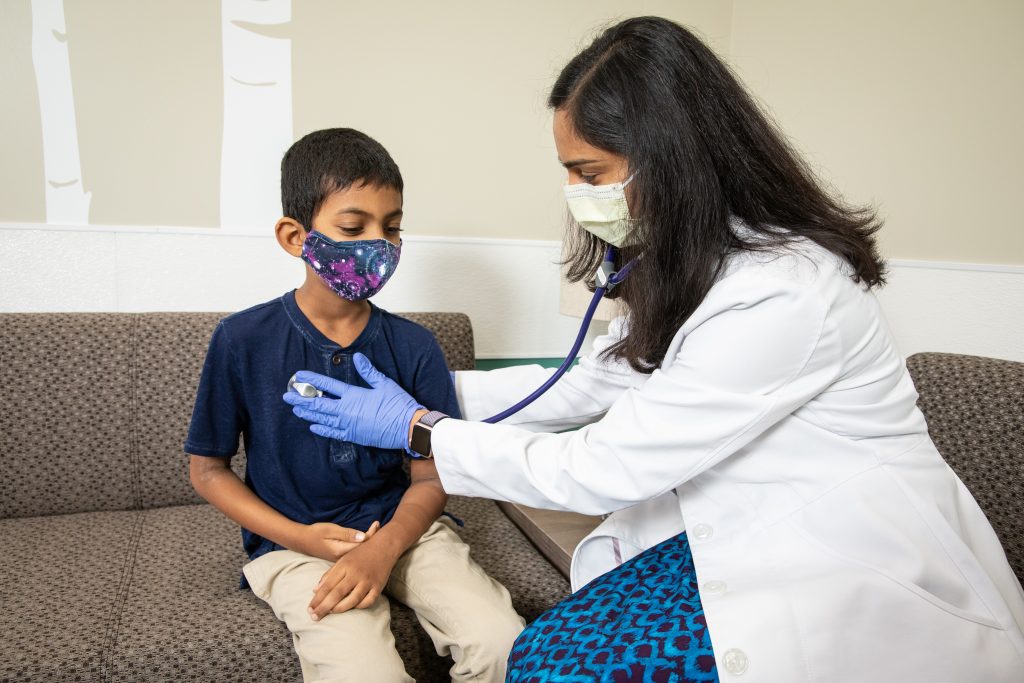Editor’s Note: This video is part of the ongoing allergy series in partnership with Columbia Allergy. To learn more about allergies, eczema, and related topics, please refer to our Allergy Guide!

One of the most daunting, but critical tasks for allergy parents is to introduce food for the first time to their little ones with food allergies. Haunted by past reactions and anxious about the possibility of triggering another one, new food introductions are to be done with care and require a whole lot of patience both from the parents and the little ones. Usually, a double negative (negative for IgE and negative skin prick test) would indicate that the food may be okay to introduce at home, however, it may just not be feasible to run the tests on all the foods in the world. Therefore, it is important to consult with your allergist on which foods would be relatively low risk to introduce at home versus challenging them in a clinical setting.
A typical at-home food introduction would span over 1-3 hours, starting with half a pinky nail-sized bite and waiting for 20-min intervals with close observation until the next, doubling the amount every time. For example, we would start with a quarter of a pea, and after 20 minutes of no reaction go onto half a pea, then a whole pea, then 2 peas, and so on.
To provide more insights to help us tackle new food introductions at home, we spoke with Dr. Jain from Columbia Allergy and sought his advice on food labels, cross-contamination concerns, delayed reactions, and when to epi.
I have a wheat allergy. Does this mean I’m allergic to gluten? Can I have gluten-free oats?
A wheat allergy and a gluten allergy are not one and the same, although they are often seen coupled together. To find out if you have a wheat allergy, a gluten allergy, or both, make an appointment with an allergist to have IgE testing for both performed. If you have a wheat or a gluten allergy, and you do not have an oat allergy, then gluten-free oats would be a safe food option for you.
Can we trust food labels and ingredients lists entirely? Are there official certifications for food labeling that ensures the ingredients are, for example, in fact, free from the top 9 allergens?
At this point in time, the FDA requires labeling for the top major allergens which are milk, egg, fish, shellfish, tree nuts, peanuts, wheat, and soybeans. Starting January 1st, 2023, the FDA will also require special labeling for products containing or processed with sesame. You will typically find warnings on these labels that will notify the consumer that the product contains, may contain, or was processed with one of these top allergens. According to the FDA, the labeling requirement is met if the name of the allergen is part of the name of an ingredient like milk in “buttermilk” if the allergen name is in parentheses next to an ingredient like “lecithin (soy)” or if there is a statement that says “contains” and then the allergens are listed. Labeling is not required for foods that are placed in a wrapper or container like a sandwich as in a deli, so extra caution should be taken around these types of products. For persons with anaphylactic allergies to foods outside of the top 8 allergens may not be able to fully rely on food labels to find safe foods to eat.
Should we avoid eating something that says it has been processed in a facility with allergens?
Patients with anaphylactic allergies should avoid eating foods that could be cross-contaminated with the known allergen to avoid a potential exposure that could cause a severe allergic reaction. Patients who have undergone OIT for an anaphylactic allergy, and who have been cleared for cross-contamination do not need to avoid foods that have been processed in the same facility as their allergenic food.
What is a delayed allergic reaction and what triggers it?
Delayed allergic reactions are typically type IV hypersensitivities. These hypersensitivities are cell-mediated and are not IgE mediated like typically food allergies or hayfever. Delayed allergic reactions are typically triggered by poison ivy, and chemicals or metals that come in contact with the skin. These can occur 24-72 hours after exposure to the substance and can result in a significant rash on the skin.
What is considered an anaphylactic reaction? What kind of red flags can parents look for in their children to determine whether it’s a “Zyrtec” or “epi” situation?
An anaphylactic reaction occurs when there is an allergic reaction that involves 2 or more body systems, and/or severe systemic involvement like a change in the level of consciousness, a drop in blood pressure, and/or respiratory distress. A mild reaction like hives or mild mouth itching can typically be managed with an antihistamine such as Zyrtec or Benadryl.
Red flags for a potential “epi” situation include hives that worsen or do not improve with an antihistamine, repeated vomiting or dry heaving, swelling of the face or lips, wheezing or change in voice, change in behavior, drowsiness, or a combo of symptoms from 2 systems such as wheezing and hives or vomiting and cough.
The FARE Food Allergy Anaphylaxis plan can be filled out by your allergist and used as a guide for which medications to administer during an allergic reaction and when to administer them.
The information on this website is not intended or implied to be a substitute for professional medical advice, diagnosis, or treatment. All content, including text, graphics, images, and information, contained on or available through this website is for general information purposes only. Always seek the advice of your physician or other qualified health care provider with any questions you may have regarding a medical condition or treatment and before undertaking a new health care regimen. Never disregard professional medical advice or delay in seeking it because of something you have read on this website.






















